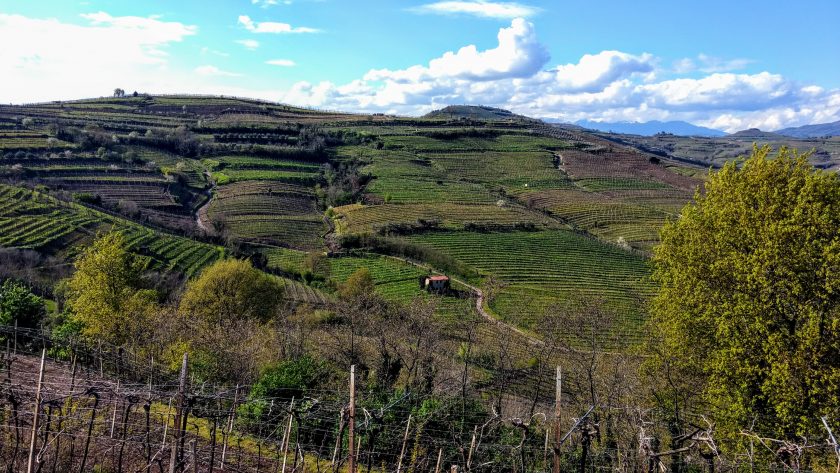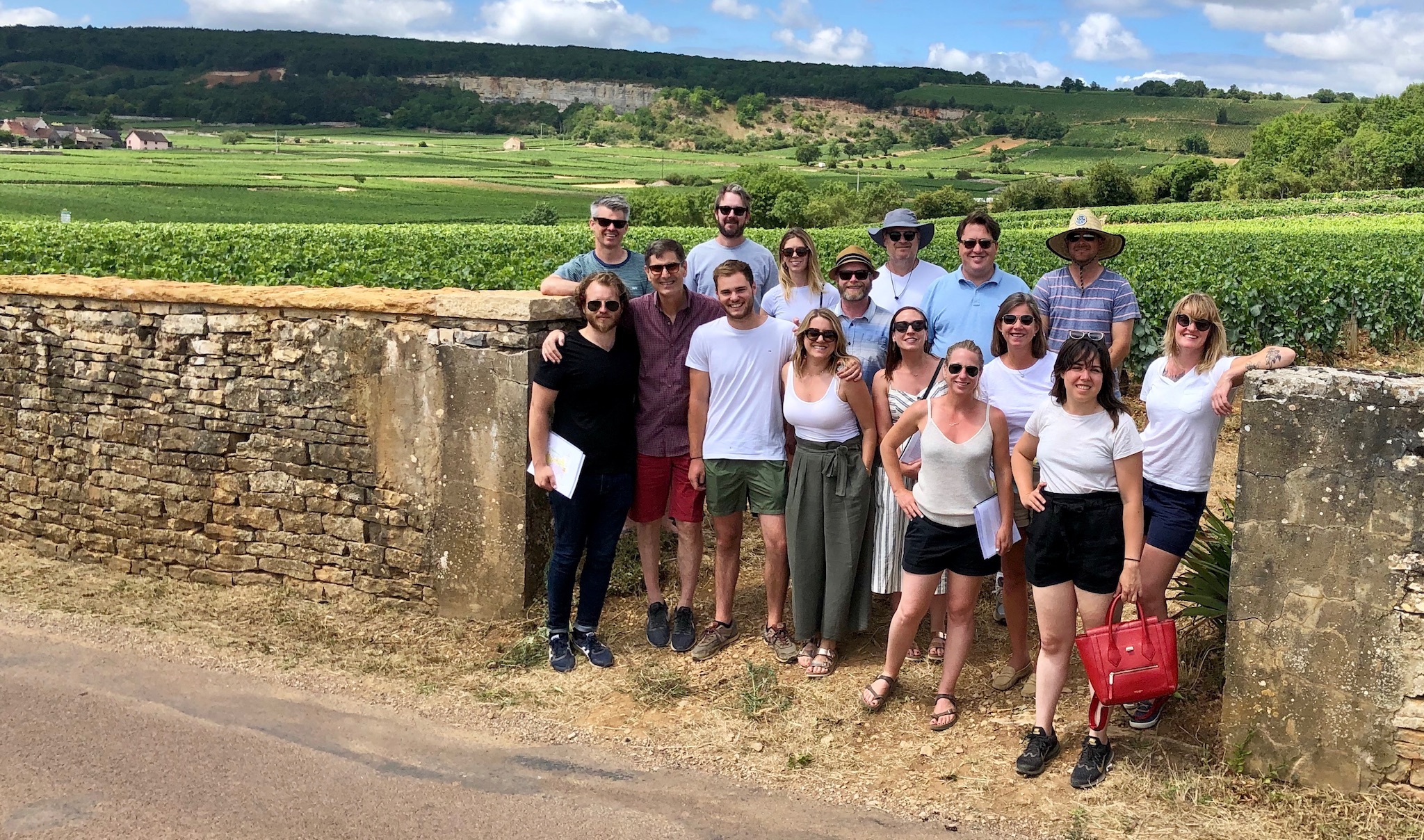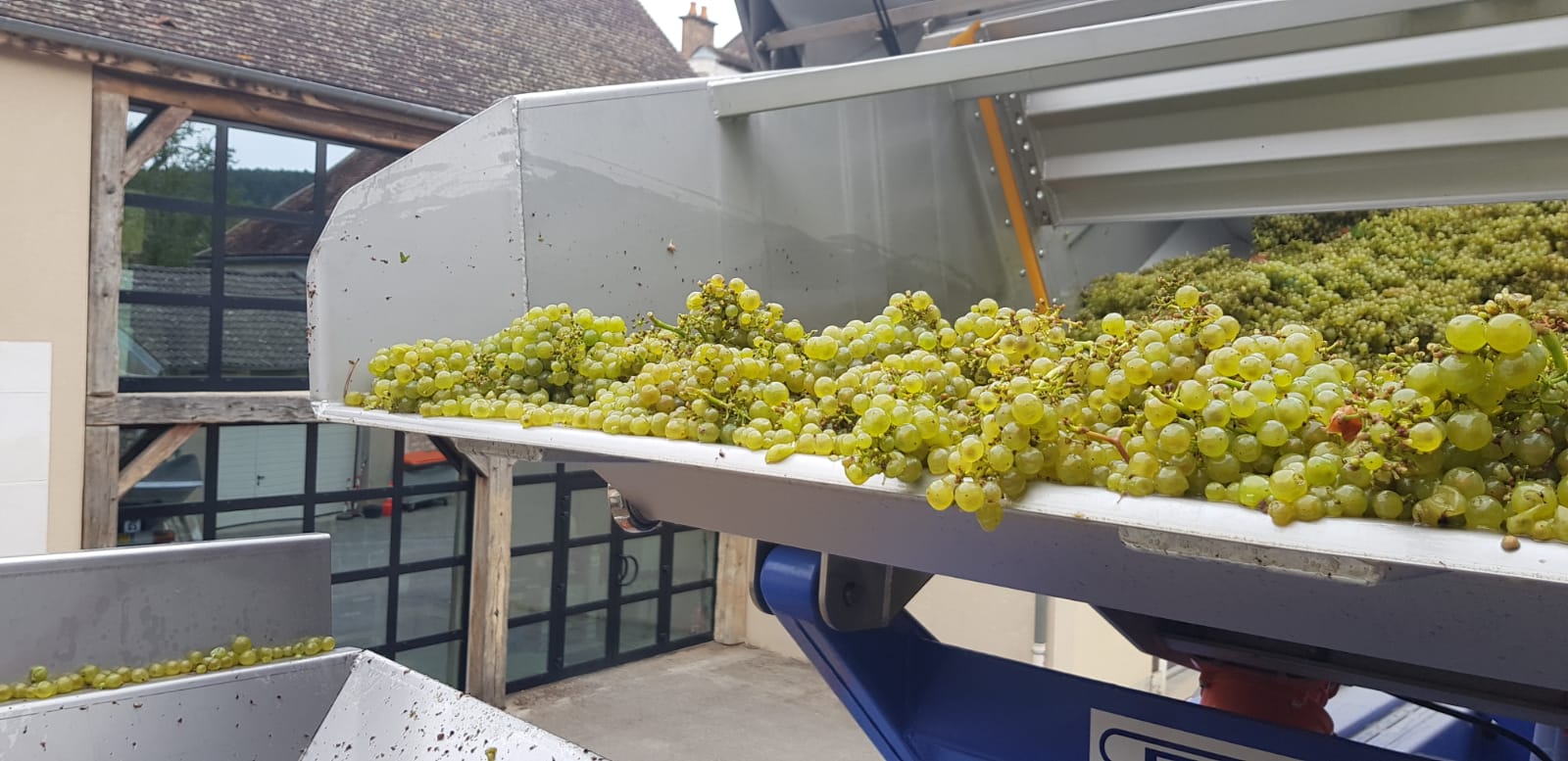Pictured above is a view of the La Frosca cru vineyard in Soave Classico, with Contrada Salvarenza in its center.
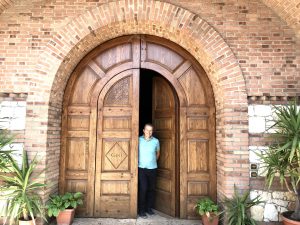 Gini should be no stranger to clients and salespeople of Skurnik— Michael and Harmon have been promoting these wines since the 1990s. This wasn’t always so— before Sandro and Claudio Gini met Marc de Grazia, the estate was courted by the likes of Robert Chadderdon and Kermit Lynch; but fate, great wine, and passion for the true Soave Classico have conspired to keep the Gini and Skurnik families together, and for that, we couldn’t be happier!
Gini should be no stranger to clients and salespeople of Skurnik— Michael and Harmon have been promoting these wines since the 1990s. This wasn’t always so— before Sandro and Claudio Gini met Marc de Grazia, the estate was courted by the likes of Robert Chadderdon and Kermit Lynch; but fate, great wine, and passion for the true Soave Classico have conspired to keep the Gini and Skurnik families together, and for that, we couldn’t be happier!
Recently, more of the world has opened their eyes to something we’ve long known as truth: Gini’s organically farmed, old vine, volcanic hillside vineyards are quietly making some of the best white wines in the appellation— if not all of Italy. Case in point, Gini’s entry-level Soave Classico 2016 was recognized by Wine Spectator with 90 points and included in their “Top 100 Wines of 2017”.
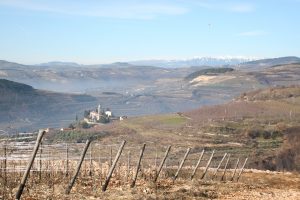
This year, Ian D’Agata, Vinous’ prolific proponent of “Italy’s best-kept secrets” really let the cat out of the bag when he praised the 2018 Gini Soave Classico with 91 points as a “knockout entry-level Soave that boasts sneaky concentration and extreme purity of fruit. Absolutely lovely and one of the better Soaves at this price point that I have memory of in quite some time.” Nota bene: this is a wine that sells for less than $20 on a retail shelf and is from 70+ year-old vines!
But the icing on the cake has to be Robert Camuto’s most recent celebration of Gini that coincides with Sandro Gini being named the president of the Consorzio of Soave producers. The tagline, “His family has cultivated grapes here for centuries. Can Sandro save Soave?” should give you an idea of the cult-status the Gini wines are reaching.
In it, he reminds us of a few vital facts regarding Gini:
- The Gini family history of cultivating grapes goes back over 400 years.
- Sandro and Claudio Gini have never planted a vineyard of Soave in their lifetime— they farm their father’s and grandfather’s vineyards.
- Their vineyards are and always have been cultivated organically (2016 is the first vintage you will find “made with organic grapes” on the labels, however).
- The youngest vines (70+ years old) go into their entry-level Soave Classico.
- Their oldest vines, most prephylloxera, go into their Salvarenza cuvee, entirely made from a subplot in the La Frosca cru.
- Gini makes “natural wines”— and in 1985 was among the first to make quality bottled wine without the addition of sulfites during fermentation. Sulfur added later at bottling is well below legal limits for organic/biodynamic wines.
- Gini uses only ambient yeasts for fermentation.
- Sandro was only 29 when he purchased the vineyards which would become the source for Tenuta Scajari Amarone and Valpolicella. The family experimented for more than 20 years before releasing the first Amarone and Valpolicella from the new Tenuta. (These wines are in stock right now!)
Knowing all of this, how can you resist getting to know these wines better?
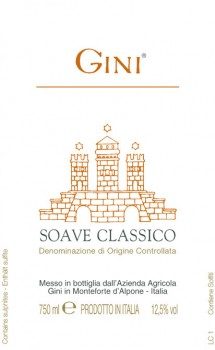
100% Garganega from a minimum of 70+ year-old vines planted to volcanic soil. Following strict selection of 100% hand-harvested fruit, the grapes are soft pressed, and the must is then immediately cooled. Thereafter, fermentation takes place in temperature-controlled stainless steel. The wine remains on its lees in steel tanks for another six months before bottling, lending richness and complexity.
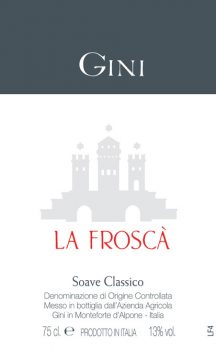
Soave Classico ‘La Frosca’, Gini 2015
The historical Froscà cru, planted in 1930, is a 6-hectare vineyard of Garganega planted in calcareous and tuffaceous (volcanic) soils. The fruit goes through a soft pressing and immediate cooling of the must. Alcoholic fermentation and aging on the lees takes place in both stainless steel and oak casks. 1,666 cases produced.
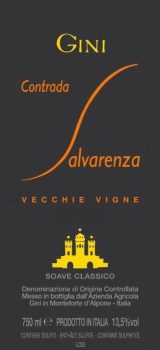
Soave Classico ‘Salvarenza’, Gini 2015
Salvarenza is a tiny sub-plot of the La Froscà Cru and home to the Gini’s centenarian vines, some of which are prephylloxera. The grapes are hand-harvested and fermented in oak cask. Malolactic fermentation and aging takes place in oak, with the wine resting on its lees for 18 months before bottling. No sulphites are added to the grape must prior to fermentation; Sandro Gini was the first in Italy to try this method in 1985.
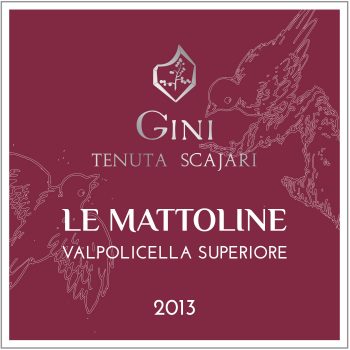
Vapolicella Superiore ‘Le Mattoline’, Gini
A blend of 60% Corvina, 25% Corvinone, 10% Rondinella, and 5% Oseleta from organic vineyards located at 400 to 600 meters above sea level. The soil is comprised of calcareous clay along with outcroppings of volcanic stones. Fruit is hand harvested at the end of September, part of which is dried for 3 to 4 weeks. Wine is aged in large Slavonian oak casks for two years before resting in stainless steel for an additional year prior to being bottled unfiltered.
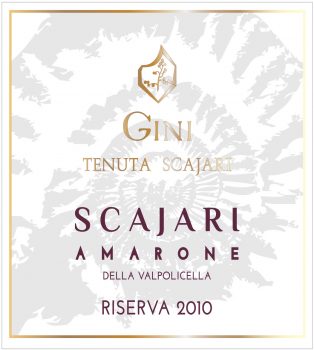
Amarone della Valpolicella Riserva ‘Scajari’, Gini 2010
A blend of 60% Corvina, 25% Corvinone, 10% Rondinella, and 5% Oseleta from organic vineyards located at 400 to 500 meters above sea level. The soil is comprised of calcareous clay along with outcroppings of volcanic stones. Fruit is hand harvested at the end of October before naturally drying for 3 to 4 months. Wine is aged in large Slavonian oak casks and neutral French barrique sur lie for five years before being bottled unfiltered. Wine then rests in bottle for 6 months before release.




